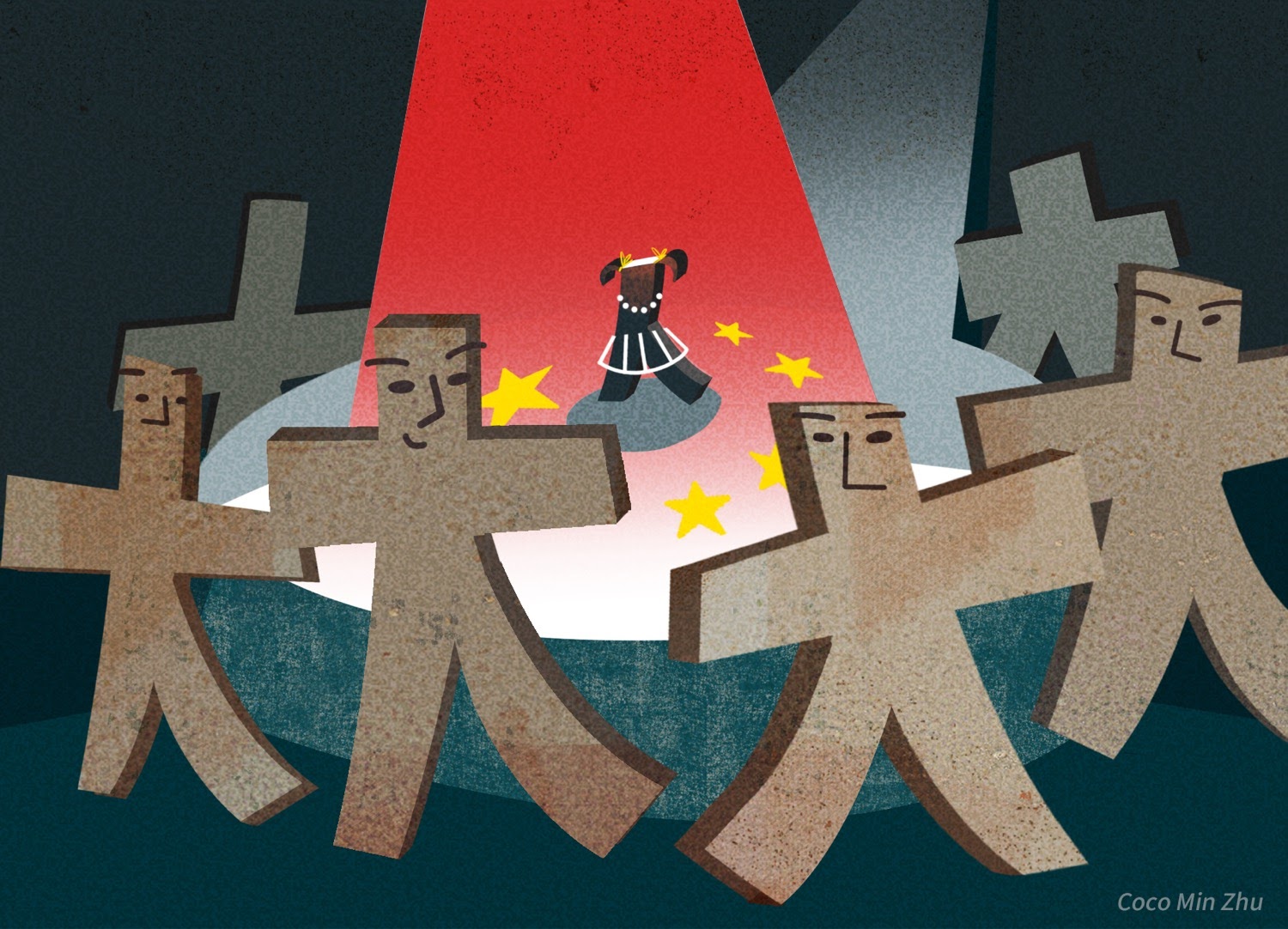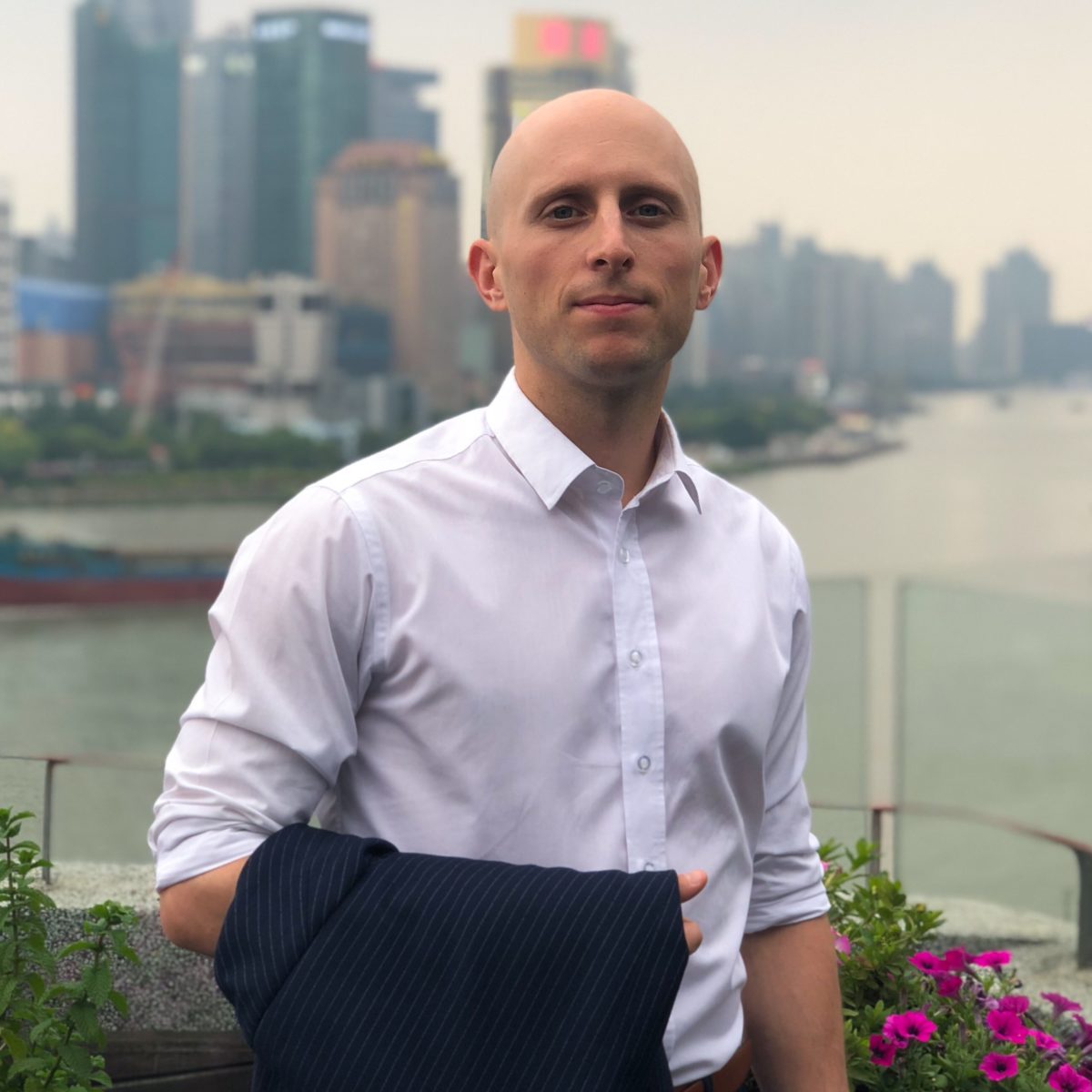The China Project illustration by Coco Min Zhu
China’s child modeling industry can’t seem to escape the spotlight of public scrutiny. A year after a video of a mother kicking her model daughter went viral, scandals continue to plague the industry. Another episode in April may have been the final straw, as a proposal to safeguard the rights of minors was submitted during China’s biggest political gathering just one month later. Regardless of criticism and controversies, the lucrative industry continues to lure Chinese parents.
An art teacher from Shanghai, Ms. Zhou (a pseudonym) stumbled into China’s child modeling industry. About two years ago, she registered her then five-year-old daughter for a fashion show, believing the experience would make her introverted daughter more confident. But an encounter with a smooth-talking modeling agent persuaded the 39-year-old mother to turn her daughter’s newfound hobby into a quasi-profession. “He said that my daughter’s face was really small and that she was photogenic,” recalled Zhou.
Soon after, her daughter was posing for big-name brands like BMW and strutting down runways at international fashion shows in Shanghai. Her story echoes a familiar tune in a country with a burgeoning leisure class, a robust ecommerce market, and hundreds of thousands of child models.
The industry is booming despite public criticism and proverbial finger-wagging from state media. In April 2019, there was furor after a video showing a Chinese mother kicking her three-year-old model daughter surfaced on social media platform Weibo. Nearly one year later, another incident ignited people’s anger when a child model’s mother posted screenshots of an agent requesting lewd photos of her son. In response, the manager admitted that he asked for naked photos due to “economic strain.”
From runways to beauty pageants to photo shoots, China’s child modeling scene is notoriously unregulated despite recent administrative measures. “China’s Labor Law is pretty unclear regarding the industry,” said Jiāng Chángchéng 姜长城, co-founder of Angel Step (天使之步星学院 tiānshǐ zhī bù xīng xuéyuàn), a child model training school in Beijing. The country’s labor law, which prohibits companies from recruiting minors under 16 years old, is largely ignored. Many child runway models are as young as three (link in Chinese).
China’s child modeling industry began in the 1990s, when the country was still finding its legs in the market economy. It wasn’t until the 2010s, though, that the industry took off. Its rapid growth is due in large part to a massive children’s clothing industry that is thriving online, and was worth nearly $14 billion in 2017 (link in Chinese). In Zhili alone, a small town in China’s east and the self-styled “children’s clothing capital of the world,” roughly 13,000 child garment companies manufacture more than half of all domestic children’s clothing, according to mainstream media outlet Caixin.
Along with modeling schools and agents, competitions for young children are popping up across the country, including in fourth- and fifth-tier cities. A study (in Chinese) by a Beijing-based research center found that there were 28 child modeling competitions held nationwide in 2017 — in 2003, there was just one.
Inside households and boardrooms, child modeling isn’t viewed as child labor, and remuneration is usually in cash. This legal gray zone has left considerable space for hundreds of child modeling schools to exploit hundreds of thousands of Chinese families. “Perhaps only one out of every 10 child modeling schools in Beijing has professional teachers and teach professional things,” Jiang said. “The rest are looking for ways to make a profit off of child models.” Jiang added that he had witnessed instances of child abuse at modeling competitions organized by other companies.
Mostly aware of the systemic issues, Chinese parents still see modeling as a chance to build their young child’s character and confidence — even posture. From Zhou’s perspective, she began to notice positive side effects in her daughter after she started modeling. “In the beginning, she was very unnatural,” Zhou said. “But she became more comfortable, and in the end, more confident and bold.”
That said, Zhou said she has boundaries. For example, photo shoots for retailers on Taobao, China’s flagship ecommerce platform, are off-limits for her daughter. “I’m strict when screening which brands my daughter can model for,” Zhou said. “I only let her work for international or well-known ones.”
Outside of wanting their children to become mentally strong and physically composed, other factors are at play for many Chinese mothers and fathers. According to Jì Lóngmèi 季龙妹, a well-known Shanghainese psychotherapist, financial considerations or personal vanity can start to slowly supersede parents’ initial benign motivations. “That’s when it starts to become an issue,” said Ji. She added that modeling can improve a child’s “confidence and self-acceptance,” yet states that overall, there are “more negatives (than positives).”
“Child models prematurely become adults, prematurely make money, and prematurely enter society,” Ji said.
In Zhou’s experience, many families with child models are doing it for money or fame — but not hers, she said. Her daughter earns around up to $700 in a typical eight-hour workday, which is the average pay and workload for a Chinese child model. For a country with a per capita disposable income hovering around $4,000, it’s no surprise that some parents allow their nine- and five-year-olds to work a nine-to-five day.
After the “kicking video” went viral last April, the daughter’s apologetic mother wasn’t the only one to issue a statement. One hundred and ten children’s garment stores on Taobao released a joint declaration (in Chinese) condemning abuse and calling for industry regulation. Staring down an angry digital mob, Taobao also put out a statement urging greater protections for child models and voicing support for its online stores, which act as the digital drivers behind the industry’s meteoric rise. The following month, authorities in the eastern city of Hangzhou (where the scandal occurred and where Chinese tech giant Alibaba, which owns Taobao, is headquartered) answered the regulatory call (in Chinese).
The first-ever industry regulations called for age restrictions on certain modeling activities and time constraints. For instance, modeling for more than one week straight that causes truancy from school is a no-go. The rules also forbid specific poses and clothing that go against “public order” and “good morals” (links in Chinese).
This year’s Two Sessions also saw a new child modeling regulation being introduced. One of China’s eight non-communist parties, the Revolutionary Committee of the Chinese Kuomintang (中国国民党革命委员会 zhōngguó guómíndǎng gémìng wěiyuánhuì), submitted a proposal establishing a legal system to protect the rights of child models. The draft regulation calls for age restrictions for minors engaging in “commercial activities.”
Yet as both these regulations are not codified into law, a comprehensive legal framework of checks and balances with a punitive bite still eludes the controversial industry. Frequent industry scandals like the one this last April are further evidence that unscrupulous activity will persist so long as loopholes remain.
Child modeling in the U.S., by contrast, which began with “baby parades” in the late 1800s, is generally regulated by most states’ stringent child entertainment laws. In California, for instance, children between the ages of two and six with an appropriate work permit can work for no longer than three hours in a day. That said, controversial child beauty pageants, a multibillion-dollar industry, slip through federal and state statutes because children are not seen as working.
Amid China’s lack of legal supervision, Zhou, whose daughter recently hung up her high heels to concentrate on school, said that the onus is on parents to protect their young ones. “It’s about not overdoing it,” she explained. “Instead, parents ought to manage their children better.” Time will tell whether government regulation or parental oversight ultimately proves more effective as the public spotlight on China’s child modeling industry intensifies.
In the meantime, a stroll around Shanghai brings back memories for Zhou’s daughter. She’s reminded of her brief vocation when she sees herself appear on TV, in the subway, or on the sides of Shanghai’s towering buildings. “She gets ecstatic when she sees herself,” said her mother — a moment of glee for the former child model star.

